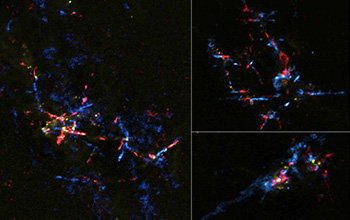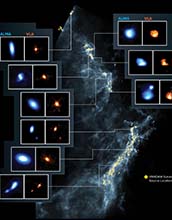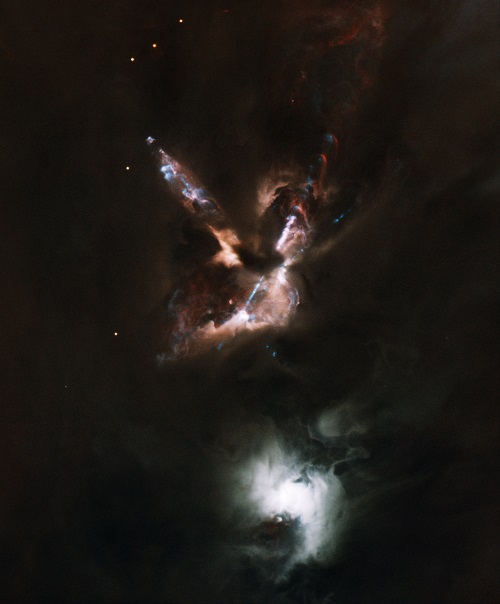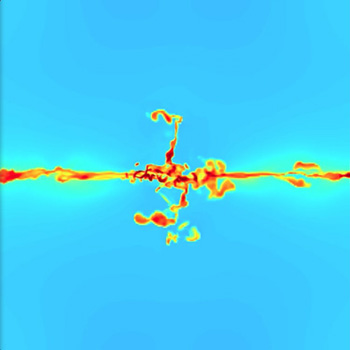搜索结果: 1-15 共查到“恒星与银河系 Stars”相关记录95条 . 查询时间(0.024 秒)

Astronomers find a “cataclysmic” pair of stars with the shortest orbit yet(图)
“灾难性”恒星 恒星 双星系统
2022/10/5

Baby stars hatch from stellar eggs near galaxy’s center(图)
Baby stars hatch stellar eggs near galaxy center
2021/4/7
Astronomers have found stellar eggs containing baby stars around the center of the Milky Way galaxy. To make the discovery, the scientists used NSF's Atacama Large Millimeter/submillimeter Array (ALMA...

An international team of astronomers used two of the most powerful radio telescopes in the world to create more than three hundred images of planet-forming disks around very young stars in the Orion C...
Giant Planets Carving Paths around Four Young Stars,ALMA Observations Suggest
Giant Planets Carving Paths Four Young Stars ALMA
2015/12/16
Astronomers using the Atacama Large Millimeter/submillimeter Array (ALMA) have found the clearest evidence yet that giant planets have recently formed around four young stars. These new worlds, each p...

A new Gemini Observatory image reveals the remarkable “fireworks” that accompany the birth of stars. The image captures in unprecedented clarity the fascinating structures of a gas jet complex emanati...
Brown Dwarfs,Stars Share Formation Process,New Study Indicates
Brown Dwarfs Stars Share Formation Process
2015/7/23
Astronomers using the Karl G. Jansky Very Large Array (VLA) have discovered jets of material ejected by still-forming young brown dwarfs. The discovery is the first direct evidence that brown dwarfs, ...
Circumstellar gas and dust emission and mass loss from evolved stars
Orbiting a star Gas Dust emissions Evolution of stars
2014/12/9
This dissertation presents a study of the circumstellar gas and dust emission and their relation to the mass-loss in evolved stars. Considering the physical process of heating and cooling of the dust,...
Investigation of Herbig Ae /Be stars in the near -infrared with a long baseline interferometer
Long baseline Stars Near infrared interferometry The dust
2014/12/9
We have conducted the first systematic study of Herbig Ae/Be stars using the technique of long baseline spatial interferometry in the near-infrared, with the objective of characterizing the distributi...

Massive black holes spewing out radio-frequency-emitting particles at near-light speed can block formation of new stars in aging galaxies, a study has found.
Formation and large-scale confinement of jets emitted by young stars finally elucidated
young stars plane scientists
2014/10/16
An international team of scientists has succeeded in explaining the formation and propagation over astronomical distances of jetsof matter emitted by young stars—one of the most fascinating mysteries ...

Mixing in star-forming clouds explains why sibling stars look alike(图)
sibling star-forming clouds
2014/8/31
The chemical uniformity of stars in the same cluster is the result of turbulent mixing in the clouds of gas where star formation occurs, according to a study by astrophysicists at the University of Ca...
Analyzing sun-like stars that eat Earth-like planets
Analyzing sun-like stars eat Earth-like planets
2014/5/16
Some Sun-like stars are ‘Earth-eaters.’ During their development they ingest large amounts of the rocky material from which ‘terrestrial’ planets like Earth, Mars and Venus are made.

Surprising new class of 'hypervelocity stars' discovered escaping the galaxy(图)
hypervelocity stars galaxy
2014/1/9
Top and side views of the Milky Way galaxy show the location of four of the new class of hypervelocity stars. These are sun-like stars that are moving at speeds of more than a million miles per hour r...
The study of neutron stars is a topic of central interest in the investigation of the properties of strongly compressed hadronic matter. Whereas in heavy-ion collisions the fireball, created in the co...
Vibrational Instability of Metal-Poor Low-Mass Main-Sequence Stars
Vibrational Instability Metal-Poor Low-Mass Main-Sequence Stars
2012/2/23
We find that low-degree low-order g-modes become unstable in metal-poor low-mass stars due to the $\varepsilon$-mechanism of the pp-chain. Since the outer convection zone of these stars is limited onl...


